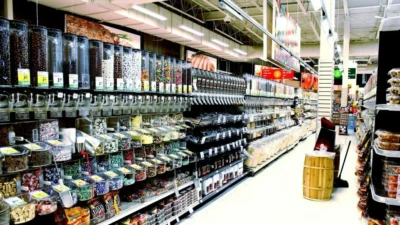Introduction Picture this: it’s late in the evening, and you suddenly realize you’re out of something essential—milk, bread, diapers, or even pet foo
Introduction
Picture this: it’s late in the evening, and you suddenly realize you’re out of something essential—milk, bread, diapers, or even pet food. The first question that comes to mind is, “How late is the closest grocery store open?” In today’s busy world, having access to groceries outside of the typical 9-to-5 schedule is more than a convenience—it’s a necessity.
In this article, we’ll break down everything you need to know about grocery store closing times. We’ll look at national and regional differences, types of stores that stay open late (or 24/7), how to find nearby open stores in real-time, and smart alternatives if everything is closed.
1. Average Grocery Store Hours
Grocery store hours can vary significantly depending on location, ownership, and type of store. However, there are some general patterns.
Large Supermarket Chains
Most large supermarket chains operate between 6:00 a.m. and 11:00 p.m., seven days a week. In urban areas, you’re more likely to find locations that open earlier or close later. Some chains may have 24-hour locations, although this is becoming increasingly rare.
Common closing times:
- Urban supermarkets: 10:00 p.m. to 11:00 p.m.
- Suburban stores: 9:00 p.m. to 10:00 p.m.
- Rural locations: often close by 8:00 p.m.
Independent Grocery Stores
Locally owned or family-run stores often have shorter hours, typically from 8:00 a.m. to 8:00 p.m. These stores may also close earlier on Sundays and holidays.
24-Hour Stores
Some stores, especially in high-traffic or densely populated areas, are open 24/7. While fewer in number than before, these stores provide critical access for late-night shoppers.
2. Differences Based on Location
United States
In major cities like New York, Chicago, or Los Angeles, many grocery stores stay open until 11:00 p.m., and some may operate 24 hours. In contrast, stores in smaller towns often close earlier. Since the pandemic, many stores have shortened their hours and have not returned to 24-hour service.
Canada
In Canada, major supermarkets such as Metro, Sobeys, and Real Canadian Superstore typically close by 10:00 p.m., though some urban locations stay open until 11:00 p.m. Hours may be shorter on Sundays and holidays, depending on provincial laws.
Europe
Store hours in Europe tend to be more restrictive. Many stores close between 6:00 p.m. and 9:00 p.m., and in countries like Germany and France, most stores are closed on Sundays altogether. However, some convenience stores and small neighborhood shops may stay open later, especially in big cities.
Asia
Countries like Japan and South Korea have convenience stores open 24/7 on nearly every block. While traditional grocery stores may close by 10:00 or 11:00 p.m., access to essentials is rarely a problem thanks to the popularity of 24-hour convenience chains.
Australia and New Zealand
Supermarkets like Woolworths, Coles, and Countdown typically operate until 9:00 or 10:00 p.m. Urban areas might offer extended hours, and some independent stores stay open 24/7.

3. Types of Stores and Their Operating Hours
Supermarkets
These are your large grocery chains, and they usually offer the widest selection of products. Their hours tend to be standard, often closing between 9:00 and 11:00 p.m.
Convenience Stores
Convenience stores, including gas station marts and small neighborhood stores, often stay open later than supermarkets. Many are open 24 hours, making them ideal for emergency grocery runs.
Pharmacies with Grocery Sections
Stores like CVS, Walgreens, and Shoppers Drug Mart often stock a limited range of groceries and remain open late, sometimes 24 hours depending on the location.
Online Grocery Delivery
Platforms like Instacart, Amazon Fresh, and local grocery delivery services allow you to place an order any time of day. While delivery windows may not be available overnight, you can at least ensure your groceries arrive the next morning.
4. How to Check If a Grocery Store Is Still Open
Use Google Maps
One of the fastest ways to check if your closest grocery store is still open is by using Google Maps. Type in “grocery store near me,” and you’ll get a list of nearby locations with their operating hours.
Store Apps and Websites
Major grocery chains have their own apps and websites where you can check store-specific hours and real-time updates, including holiday closings and special hours.
Call the Store
If you’re unsure, the most reliable method is to call the store directly. This is particularly helpful if you’re planning to go late at night or on a holiday.
Social Media
Some stores post their hours or updates about closures on Facebook, Instagram, or Twitter. A quick check might save you a wasted trip.
5. What to Do If Everything Is Closed
If it’s too late and your usual grocery store is closed, you still have some options.
Visit a 24-Hour Convenience Store
Even if your local supermarket is closed, a convenience store or gas station mini-mart might be open. These places typically stock essentials like bread, milk, snacks, and beverages.
Use a Vending Machine
In some cities, especially in Asia and parts of Europe, vending machines offer everything from drinks and snacks to fresh salads and full meals.
Plan Ahead
Keep a small stash of emergency food and essentials at home. This can include canned goods, shelf-stable milk, and frozen meals—ideal for when you can’t make a trip to the store.
Schedule Early Morning Delivery
If it’s past midnight and you’re out of luck, consider placing an order online to have groceries delivered first thing in the morning.
6. Pros and Cons of Late-Night Grocery Shopping
Pros
- Fewer crowds and shorter lines
- Easier parking (in cities or malls)
- Discounted items close to expiry
- Quiet shopping environment
Cons
- Limited staff availability
- Restocking may be in progress, leading to empty shelves
- Some departments (deli, butcher, bakery) may be closed
- Not all locations are open late
7. Tips for Late-Night Shopping
- Check the store hours before heading out.
- Make a list to speed up the trip and avoid forgotten items.
- Be respectful if you arrive just before closing time; employees may be preparing to close registers and clean up.
- Use self-checkout if available—it often remains open until store closing.
FAQs
Q: What grocery stores are open 24 hours?
A: Some locations of chains like 7-Eleven, Walmart (select areas), and local convenience stores operate 24 hours. These are more common in cities than suburban or rural areas.
Q: Why did stores stop being open 24/7?
A: The shift started during the COVID-19 pandemic due to labor shortages, safety concerns, and cleaning protocols. Many stores found limited overnight traffic didn’t justify the cost of staying open all night.
Q: Are there grocery delivery services available late at night?
A: Some services allow late-night ordering, but delivery windows usually close around 9 or 10 p.m. However, you can schedule for early morning delivery the next day.
Q: Is it safe to shop at night?
A: Safety depends on your neighborhood and the store’s location. Stick to well-lit, familiar places and avoid isolated areas. Shopping earlier in the evening is generally safer.
Q: Can I find fresh food late at night?
A: Fresh produce and baked goods may be limited late at night, as stores begin restocking for the next day. Packaged and frozen items are typically still available.
Q: What time do grocery stores usually open?
A: Most grocery stores open between 6:00 and 8:00 a.m. If you can’t find a late-night option, early morning is your next best bet.
Q: Are holiday hours different?
A: Yes, stores often operate with reduced hours on major holidays, or they may be closed entirely. Always check ahead during the holiday season.
Conclusion
Knowing how late your closest grocery store is open can make a huge difference—whether you’re preparing for the next day or managing a last-minute emergency. While most grocery stores close between 9:00 and 11:00 p.m., you can often find a 24-hour convenience store or gas station mart nearby for urgent needs.
With a combination of planning, technology, and local knowledge, you’ll never be caught off guard again. Whether you’re shopping at dawn or after dark, understanding store hours ensures you’re always just a short trip away from the essentials.
More Info: primereport




COMMENTS